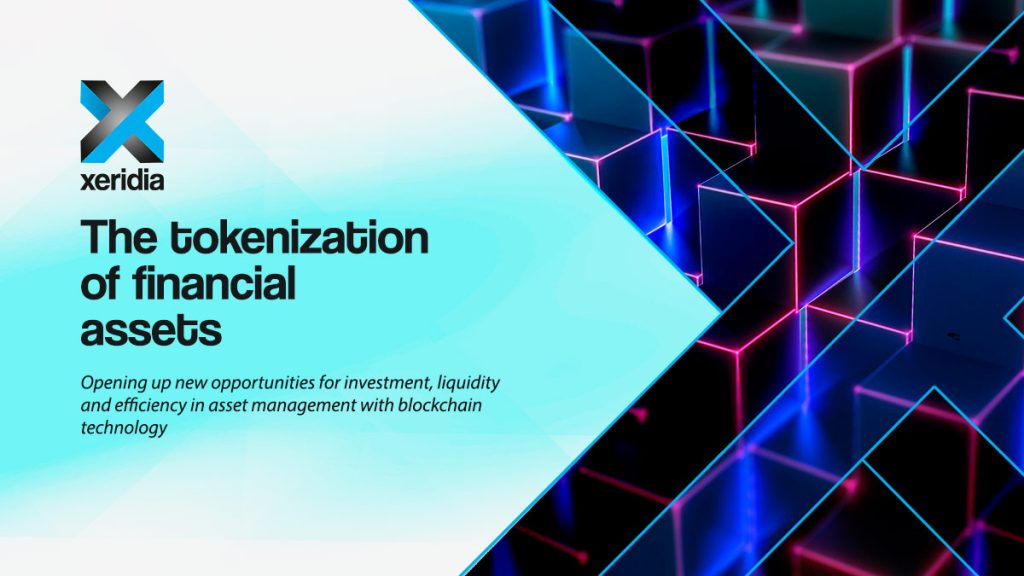
Blockchain technology is revolutionizing the financial world by positioning itself as a solution to offer decentralized and secure public accounting. One of the applications of this technology is the tokenization of financial assets.
Tokenization is, to put it very simply, the transformation of a real asset into a digital one, which is incorporated into a block and becomes part of the blockchain.
The token is a digital representation of any asset in the form of a unique code, and can apply to elements related to any business field: fiat currency, fixed income assets, insurance policies, precious metals, a right to vote, legal documents, art pieces, real estate… In this context, the blockchain would be the decentralized registry that enables the execution of an agreement or transaction between parties, without the need for intermediaries and providing a storage of all executed transactions, which can be publicly consulted.
Tokens serve as a digital certificate of ownership of the asset in question or of the transactions executed between two or more parties around that asset. Going a step further, in order to be able to incorporate applications around the concept of tokens in the decentralized network using a programming language, smart contracts were developed.
Smart Contracts
A Smart Contract is a self-executing program in which the terms of the agreement between the buyer and seller are written using lines of code. The code controls the execution and the transactions are traceable and irreversible. They allow all types of digital assets to be implemented using tokens. They are contracts that are automatically and securely executed and fulfilled, reducing fraud, costs and bureaucracy.
Smart Contracts allow tokenization, that is, generating the token of an asset on the blockchain to subsequently perform operations on those tokens between two or more parties, called transactions. The blockchain incorporates consensus algorithms based on mathematical computation that are executed by the nodes of the network to verify that a transaction is valid. When a transaction is established to be valid, it is incorporated along with other transactions into a block and that block is incorporated into the chain. Each block is represented by a unique hash code as a fingerprint and also contains the hash of the previous block. In this way, transactions become traceable, immutable, secure against fraud and, at the same time, private, since the personal identity of the parties is not revealed.
Fungible and non-fungible tokens
There are two main types of tokens in blockchain: fungible tokens (ERC20), which represent elements that are identical to each other and of which the number of units of that token is managed, and non-fungible tokens or NFTs (ERC721), which are elements that are defined by a series of characteristics and attributes that make them unique and indivisible.
To work on the blockchain with fungible tokens, smart contracts were developed using the ERC20 standard and, in the case of non-fungible tokens, using the ERC721 standard. Subsequently, the ERC1155 standard was devised to be able to tokenize and operate on both types of tokens in a single contract.
Taking into account that in any operation on the blockchain, whether it is the deployment of a Smart contract to tokenize an asset, or a transaction performed on a Smart contract to operate on that asset, the payer must pay an amount in gas (which will correspond to the native digital currency of the corresponding blockchain), working with ERC1155 is much more efficient in gas consumption and, therefore, more economical, since we can include in a single contract more than one token of any type and also perform operations on them in batch mode (several operations in a single transaction).
The tokenization of assets in the financial context
Tokenization and the use of Smart Contracts in the financial context provide a number of significant advantages. It facilitates the fractionation of high-value assets that would otherwise not be so easily traded, which also offers greater liquidity. Tokenizing enables the decentralization of markets, as there is no need for a central regulatory or clearing body, exchange or intermediary to serve as a verifier. This makes transactions faster (24 hours a day, 7 days a week) and reduces costs.
Asset tokenization outside the financial context also has a wide range of applications, such as in the logistics sector (digitization of the supply chain), food (verified consumer information on products), insurance (product identification and tokenization of policies and agreements), healthcare (tokenization of medical records and personal patient reports), the public sector (red tape and documentation), or the art industry (tokenization of works of art to facilitate investment and the exchange of valuable pieces on a fractional basis).
Challenges of blockchain technology
Despite its many benefits, blockchain technology also faces challenges such as performance for those applications requiring very low latency, data storage and processing (which is performed on all network nodes), interoperability between infrastructures (it must cover the regulatory frameworks of different geographical areas between which transactions are made between different blockchains), the immutability of the information (it makes it difficult to correct errors in Smart contracts already executed), anonymity (published transactions, by not revealing private information, make it difficult to trace illicit operations), as well as the need to guarantee the security and privacy of users, since, if a user loses their access keys to their digital wallets, they will lose their assets.
María Luisa Mirantes – Team leader at Xeridia
Our team has experience in developing blockchain solutions in any industry. Join the change and innovation in your sector and consult us, we will help you!


